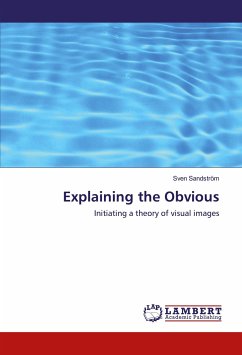
Explaining the Obvious
Initiating a theory of visual images
Versandkostenfrei!
Versandfertig in 6-10 Tagen
33,99 €
inkl. MwSt.

PAYBACK Punkte
17 °P sammeln!
"Explaining the obvious" is a study of rational cognition related to sense impressions and independent of language. Wordless awareness is usually taken for granted without any specific focus on underlying cognitive structure. Wittgenstein, in his "Tractatus logico-philosophicus" describing image as a cognitive type accessible from the linguistic and logical system, bluntly denied that meaning could be other than linguistic meaning. In contrast, the present book highlights two qualities of visual images, illustrating a deep difference between image and language as a system and from both structu...
"Explaining the obvious" is a study of rational cognition related to sense impressions and independent of language. Wordless awareness is usually taken for granted without any specific focus on underlying cognitive structure. Wittgenstein, in his "Tractatus logico-philosophicus" describing image as a cognitive type accessible from the linguistic and logical system, bluntly denied that meaning could be other than linguistic meaning. In contrast, the present book highlights two qualities of visual images, illustrating a deep difference between image and language as a system and from both structural and functional aspects: Firstly, attending to a visual image and giving it meaning, only oneself becomes aware of the resulting meaning. It is question of inner cognition, not a communication. Secondly, visual images appear as a spread out surface, spatial and simultaneously multidimensional - in contrast to language that is digital and linear in time. Artistic manifestations, whether pictorial art or music, come forth independently of language and must be expressive of meaning beyond verbal representations.












